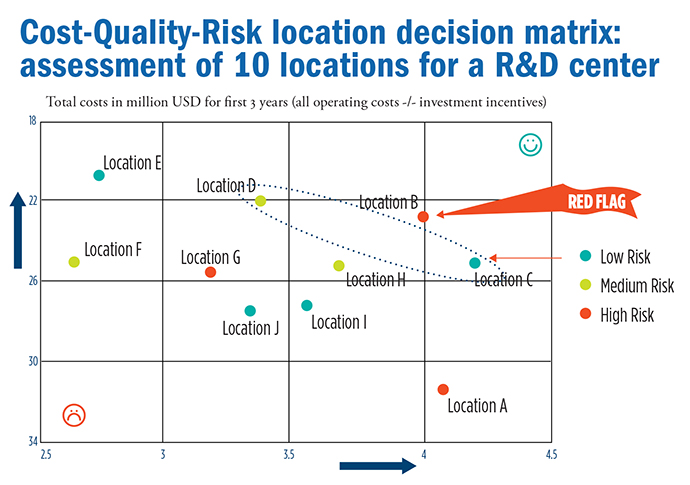According to a recent survey of CEOs and CTOs of innovation companies, less than a fifth of these companies say they are ahead of the curve in such emerging trends as the Internet of Things, digitization and software development, and they say they are behind in globalizing their R&D footprint and transparency and accountability in R&D performance. This means that more than 80 percent of the CEOs and CTOs interviewed are very concerned about their companies’ R&D performance.
In order to win the R&D rat race, companies adopt three supplementary strategies. The first is obvious: putting more money in R&D. Between 2005 and 2016 the 1,000 global, innovation-leading companies increased their R&D spending 70 percent to US$680 billion. The average annual growth of nearly 5 percent in this 11-year period was consistent. Even in recent recession years innovation leaders increased their R&D expenditures.
The second strategy is open innovation — opening up the windows of the company’s own R&D centers and laboratories and co-operating more with universities, technology institutes, start-ups and SMEs. The rationale is simple: you cannot have all the bright researchers in your technology/industry on your own payroll, so let’s co-operate with ‘other brains’ to have better, faster and more efficient R&D results. This strategy already is adopted by many high-tech companies as well as the biopharma industry. Every day there are announcements of acquisitions and co-operation agreements between blue chip companies and start-ups. A new step in this open innovation strategy is to search for locations where innovation network ecosystems exist, as cross-overs between technologies and industries become more important. Think about the growing importance of software development in all sectors of manufacturing industries versus industry specific product-based offerings.

The third strategy is globalization. Specific know-how, reduction of development failure risks and availability of qualified talent are the main drivers of internationalization of R&D. Others are cost considerations (lower costs, tax advantages), market considerations (proximity of markets and customers, overcoming protectionist barriers) and legal considerations (approval process of for example new medicines, patenting process).
European companies are increasing their R&D efforts outside their home countries. Between 2007 and 2015, UK companies grew their non-domestic expenditures from 67 percent to 80 percent, French companies from 50 to 65 percent and German companies from 65 to 69 percent. This R&D does not typically shift to low-cost countries. It is high-cost countries like the US and Japan that benefit from this trend and host more and more R&D centers of foreign firms.
Location Choice
Buck Consultants International surveyed Chief Technology Officers and Heads of R&D on their locational drivers for future R&D centers. Availability of talent and ecosystems (world class character of institutes/universities and co-operation possibilities with institutes and companies) are among the most important location requirements. International accessibility is also important — companies require easy access to their headquarters or main corporate R&D centers, but also for personnel that move to the new R&D center.
How do companies make a global location choice for an R&D center? Three types of location factors play a role: cost, quality of the business environment and risk factors.
Cost factors include personnel costs, building & lab costs and taxes. Typically, these are forecast for the next three to five years.
Quality of the business environment are factors which cannot directly be translated in currency, but do play an important role in running a successful R&D center. A lot of the factors are talent related: Can we find the right R&D personnel? How many specialized researchers study and graduate from the universities in the area? Are there many competing employers? Are top researchers around the world prepared to relocate to the candidate locations (quality of life, personal income taxes, visa’s, etc.)? A second group of quality factors refers to the open innovation strategy mentioned earlier: Can we co-operate with a university or tech institute in collaborative R&D programs? What is the scientific reputation of that university, and how do they work together with businesses? Is there a thriving start-up climate in our industry?
The third category is business disruption risks. Think about political risks (for example immigration and visa policies for expats) and legal risks (patent infringements, data protection, permitting), but also natural disaster risks or security risks.
These three types of factors can be brought together in a Cost-Quality-Risk matrix (see chart). The vertical axis shows the total costs of establishing and running an R&D center, varying in this example between $21 million (location E) and $31 million (location A). The horizontal axis shows the quality scores of all locations, varying between 2.6 (location F) and 4.1 (location C) on a scale from 1 (very poor) to 5 (excellent).
Based on these two axes, locations in the upper right cell are the best as they combine low costs with high quality of the business environment (see green smiley). Location B offers the best of both worlds: cost competitive as well as a high-quality score. But if we bring the risks into the decision process, location B has unfortunately a high-risk score, leaving the final decision between location D and location C.
Locating R&D centers is one of the most difficult corporate decisions. In many situations, soft factors (technological co-operation opportunities, availability of qualified talent) outweigh hard factors (labor costs, real estate costs). That makes the availability — on an international or even global level — of reliable, up-to-date, comparable (apple-to-apple) data on cost, quality and risk factors for all relevant (global) locations imperative.
René Buck (rene.buck@bciglobal.com) is founder and CEO of Buck Consultants International, one of the leading global firms specialized in location decision support (for production plants, R&D centers, distribution centers, data centers, support centers), manufacturing footprint optimization and supply chain design. The company has 11 offices in the US, Asia and Europe.
